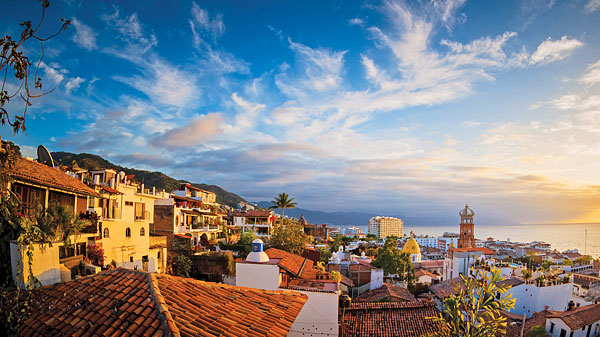When its new promotional campaign, Knocking at the Door, premiered earlier this year, the Mexican Ministry for Tourism made no secret of the fact it was intending to woo one particular demographic – high-spending Chinese tourists. Indeed, the US’ southern neighbour has high hopes that its blend of cultural delights, jaw-dropping landscapes and ready welcome will be enough to ensure that many more mainlanders (and Hongkongers) are intrigued enough to undertake the 25,000km round-trip. Given the size and diversity of Mexico – with the country’s 31 states stretching across 1,972,500sq.km and some 126 million now calling it home – singling out particularly China-friendly aspects is no easy matter. Complicating things still further, many of its most well known locales may not be the best of places to forefront from the off.

While Mexico City, the country’s bustling capital, or Cancun, the beach and spring break paradise, will spark recognition in even the least Mexico-minded, one of the country’s true gems lurks far from both – Puerto Vallarta (PV), the West Coast city that has long proved an irresistible lure to many exiled US artists and writers. Indeed, while PV – as it is more informally known – is a must-see for the many North Americans that make up 66 percent of its tourist traffic, it remains little explored by visitors with more Eastern origins.
For those looking for a truly authentic Mexican experience, Jalisco – Puerto Vallarta’s home state – is undeniably hard to beat. Indeed, it more than lives up to the oft-heard boast “Jalisco is Mexico”, with the locals keen to claim that everything essentially Mexican – from mariachis and charreadas to tequila and sombreros – originated within its borders.

Such cultural landgrabs aside, one thing remains indisputable – Jalisco is home to some of the Eastern Pacific’s most beautiful beaches, with Puerto Vallarta at the very epicentre of its appeal. Not all that long ago a relatively modest fishing village, the contemporary city is now one of the country’s most cosmopolitan, boasting a fine array of high-end golf courses, exclusive resorts, five-star restaurants and just enough luxuriously-secluded havens to pique the interest of any well-heeled traveller.
While the development of the city’s hotel sector kicked off in the ’60s, it wasn’t until the mid-’70s that the city began to be regarded as a true home to world-class luxury resorts.
Now, it boasts more than 50 five-star hospitality options, as well as a wide range of longer-stay luxury condominiums and apartments, many of which are the annual refuges of wealthy North Americans looking to sit out their blustery hometown winters in a far more salubrious spot. For many years, the city’s allure was only further enhanced by the weakness of the Peso, the local currency, when compared to the mighty US dollar. Even now, despite the region’s surging fortunes, it still remains astonishingly good value when compared to prices across the border and even to some of Mexico’s more popular tourist locales, such as Cancun or Cabo.

As to the best times to visit, the autumn and winter seasons have much to recommend them. As well as a surfeit of lively local festivals, the temperature falls to 38°C, something of a respite from the summer heights of 45°C and above.
The city’s downtown district has been declared a Cultural Heritage Site by the federal government, a citation that has ensured thousands every day are now intent on exploring such historic highlights as the Malecon – a 12- block-long esplanade packed with gift shops and al fresco eateries. Nearby, for those whose interests in spirits go beyond Tequila Slammers,
is the beautiful Church of Our Lady of Guadalupe Parish, arguably the city’s bestloved building. Here you can marvel at the architecture while also reflecting on the country’s eclectic blend of committed Catholicism and exotic, pagan-infused corpse-centric carnivals. Unsurprisingly, you can also spin out your spirit worship courtesy of one of the many tequila tours on offer.
This will see you whisked off to one of the district’s many ranch-set distilleries, where samplings and scientific demonstrations are on offer in almost equal measure. Should you remain largely compos mentis after living it large on the libation front, a beguiling array of more demanding activities lie in wait.

Depending on your disposition, dislikes and willingness to dish out the dollars, you are free to choose between swimming with dolphins, snorkelling, showing off your sailing savoirfaire, siestaing on private-hire craft and circling the bay on a chartered flight.
Inevitably, active participation in any of the above will only enhance your appetite. It’s somewhat fortunate then that, over the years, Puerto Vallarta has become just as renowned for its culinary versatility as it is for its cultural vibrancy. This sees hungry holidaymakers having the option of either going high-end, courtesy of the many fine-dining establishments set up in the city by celebrity chefs, or going native at one of the more indigenous nosheries. With the latter always the choice of true world travellers, Chiles en Nogada, the city’s signature dish, is particularly worth seeking out. After all, who could resist a meat-packed poblano pepper doused in sumptuous nut–almond sauce and garnished with Oporto pomegranate seeds?

Suitably replenished, all that’s now required is a suitably snug spot to while away the wee hours, a nook where both the local cocktails and the accompanying conversation are sure to sparkle. Thankfully, Puerto Vallarta, with its arresting array of bars, nightclubs, speakeasies and luxury lounges, is unlikely to disappoint.
So, “Salud!” as they tend to say with engaging regularity around these parts.
For the full article, please find the latest issue of Gafencu’s print magazine or the PDF version on the Gafencu app. Download the app from the Google Play Store or Apple App Store.
Text: Bailey Atkinson
Photos: Puerto Vallarta Tourism Commission



